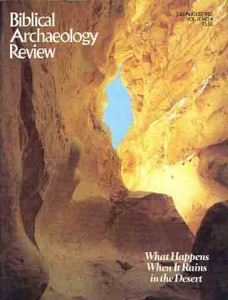
Who were the people of the Exodus? Have archaeologists uncovered any buildings, artifacts, pottery or other evidence of a people who traveled north from Egypt and migrated into Canaan? Scores of surveys and excavations were conducted in the Sinai from the summer of 1967 until Israel turned the Sinai over to Egypt in 1982. In the Negev, teams of leading archaeologists have been excavating for decades. One of these archaeologists is Rudolph Cohen. In his article, “The Mysterious MBI People—Does the Exodus Tradition in the Bible Preserve the Memory of Their Entry into Canaan?” this distinguished Israeli archaeologist presents the first publication of a new theory: the people of the Middle Bronze I period (2200 B.C. to 2000 B.C.)—a people whose settlements, pottery, and general material culture were sharply different from what went before and what came after—may be the Israelites, or proto-Israelites, who left Egypt and came at last to their Promised Land.
Cohen—known colloquially among Israeli archaeologists as the “King of the South”—is now excavating at Nahal Nissana, the largest Middle Bronze I site in Israel. Since 1978 he has served as head of the Israeli Archaeological Rescue Survey team for the Negev. With the signing of the Egyptian-Israeli peace agreements, Cohen launched Israel’s most comprehensive archaeological survey and rescue in the Negev to date, working in areas Israel would need for airfields as troops withdrew from the Sinai.
Already a library member? Log in here.
Institution user? Log in with your IP address.

